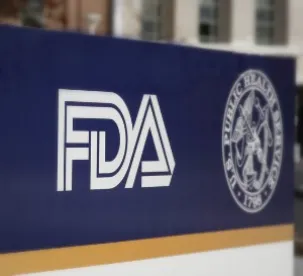Last week, FDA released guidance for life sciences manufacturers that produce medical devices and components “critical to public health,” including materials that support or sustain life, or are used in emergency care or surgery. If there is an anticipated (or actual) disruption that may result in a shortage based on increased demand or supply-side interruption, the FDA must be notified no later than seven calendar days from the onset. The requirement to notify the Agency applies to a broad range of devices and equipment, and lasts for the duration of the COVID-19 emergency.
The FDA’s guidance on this topic arises out of the March 27, 2020, CARES Act amendments to the Food, Drug and Cosmetic Act. Those updates, codified at 21 U.S.C. § 356j, mirror similar provisions for prescription drug shortages implemented in December 2016. While the statutory provisions contemplate that a device manufacturer would provide notice to the FDA of an anticipated shortage or interruption at least six months in advance, or “as soon as is practicable,” the recent guidance recognizes that this may not be possible under current market conditions.
One key difference from the corresponding prescription drug shortage provision is that the FDA may choose not to publicize information collected about a device or component shortage to avoid panic purchases or stockpiling.
In a webinar explaining the guidance on May 11, 2020, Linda Ricci and Katie O’Callaghan of the Division of All Hazards Response, Science and Strategic Partnerships emphasized the importance of an ongoing dialogue between manufacturers and the FDA. “What may not be widely known is the collaborative work we do in partnership with members of our stakeholder community to identify, address, and mitigate device shortages,” O’Callaghan said. They further encouraged manufacturers to update the FDA by email approximately every two weeks regarding any anticipated or ongoing shortage.
During the webinar, questions were raised as to the applicability of this guidance to devices that are being used during COVID-19 under an Emergency Use Authorization (EUA) because the guidance did not squarely address those devices. In response, FDA staff advised manufacturers to look at the terms of the EUA applicable to the particular device and to contact FDA with any questions.
Some additional highlights from FDA’s guidance:
Devices Subject to the Notification Provision
Any device or accessory that is:
-
Life-supporting, life-sustaining, or intended for use in emergency medical care [even if that device is not specifically used for COVID-19 related treatment]
-
Examples: ventilators, ventilator tubing, hemodialysis equipment, automated external defibrillators, thermometers that have received 510(k) clearance, surgical gowns listed pursuant to section 510(j) of the FD&C Act
-
Intended for use during surgery [even if that device is not specifically used for COVID-19 related treatment]
-
Examples: cardiopulmonary bypass oxygenators, infusion pumps, and tubing
-
Used to diagnose, cure, treat, mitigate, or prevent COVID-19
-
Examples: supplies from diagnostic and serological specimen collection kits, reagents for extraction or PCR amplification or serological testing, pulse oximeters, cardiac or other monitoring equipment, personal protective equipment (PPE)
-
Would be in higher-than-typical demand during the COVID-19 pandemic [compared with a similar period of time]
-
Included: Any device with marketing authorization from the FDA, or is listed with the FDA pursuant to 21 U.S.C. § 360(j).
-
Not included: Any device is required to obtain 510(k) clearance, but has not received such clearance and is marketing pursuant to an exercise of enforcement discretion.
When Notification Is Appropriate
-
Manufacturers should make the decision to notify primarily based on the supply and distribution of their own While companies may have information about the marketplace generally, the FDA does not expect companies to anticipate or account for the capacity of other manufacturers.
-
Manufacturers should notify the FDA of a shortage even when there are other models/versions or alternatives of the same device that could be used for the same purpose (but should identify the available alternatives for the FDA).
-
Manufacturers should notify the FDA of a shortage or interruption currently in progress, even if such conditions arose prior to the March 27 CARES Act amendments or the May 6, 2020 FDA Guidance document.



 />i
/>i

